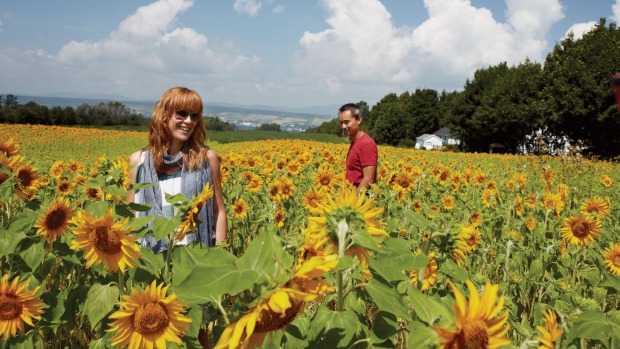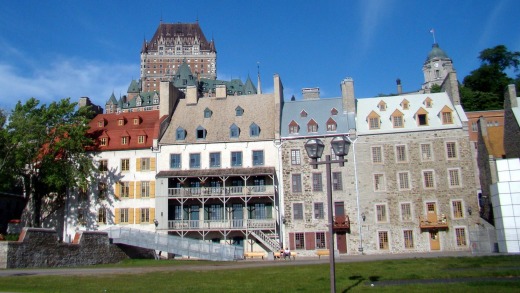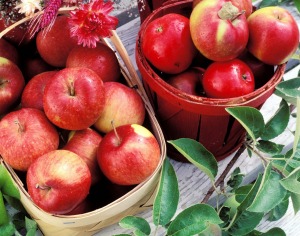
A city that has a vegetable garden at the entrance of its imposing Parliament House is a city seriously focused on food. And the fact that the powers-that-be encourage people to pick the seasonal vegies and herbs to take home and add to their dishes, is more than a little forward thinking.
Could we honestly imagine such a thing happening in Canberra? We humble taxpayers would surely be trampled in the rush to the vegetable patch by a stampede of over-entitled pollies. But I digress.
This haven of egalitarianism is Quebec, not only one of the most beautiful cities I've visited but the capital of a province that is also passionate about good food. Not fancy, silly food, but delicious cuisine made with the freshest of ingredients.

While the Quebec Parliament Gardens, an initiative between Laval University and a group called "Urbain-culteurs", are relatively new, the concept of growing food in the heart of this city of half a million people is not. The Chateau Frontenac, Quebec's landmark hotel, has been growing herbs on the roof between its castle-like turrets for 20 years and its former executive chef and TV personality, Jean Soulard, was one of the first to keep beehives on a hotel roof. Now even Parliament House has resident bee-keepers.
Urban cultivation may be the new buzzword, but honest-to-goodness fresh produce is a long-standing tradition in the province, where 80 per cent of residents speak French.
While there are almost 1000 restaurants in Quebec City (and I ate in several from cheap to expensive), I decide to take a food walking tour hoping to not only stem the calorie creep a bit but also discover a few hidden places. Our guide Michael O'Neill (not everyone is French, by the way) said he'd lost seven kilograms in his first year of leading the tours, but I notice he doesn't snack on the job.

There are seven stops on the tour, including a rustic creperie where they make delicious Breton-style crepes; a hip rotisserie restaurant with its own garden and also bees on the roof; a chocolate shop-cum-museum; and, naturally, a maple syrup eatery. After a few days in the city I am already well acquainted with maple syrup and had unknowingly been eating bacon infused with the sweet liquid courtesy of my hotel's breakfast buffet – not that I minded. The tour, which explores the St Jean de Baptiste area beyond the old city gates, is perfect for those with limited time who want a crash course on classic dishes with history thrown into the mix.
The previous day I had popped over to Ile d'Orleans (island of Orleans), five kilometres east of town. Known as the Garden of Quebec, three-quarters of this little island in the St Lawrence River is given over to agriculture. There are dozens of roadside market stalls selling strawberries, apples, asparagus and potatoes, four wineries and a handful of sugar shacks: maple syrup heaven.
Later I head to the Vignoble de St-Petronille winery and savour a glass of one of their dry whites, Bout de L'ile, while tucking into a casual lunch prepared by Panache Mobile, a gourmet food truck. Panache is one of Quebec City's highest rated restaurants but its cheaper version on the island serves up dishes equally as good and at a fraction of the price.
With so much good produce in the province, it is no surprise that the Quebecois have devised several country food trails. The closest to Quebec City is in the gourmand's favourite region of Charlevoix. Hugging the north shore of the St Lawrence River and beginning in the artists' village of Baie St Paul, 92 kilometres from Quebec City, Charlevoix produces much of the cheese, organic meats and poultry, honey, breads, pates, fruits, vegetables and relishes you see on city menus. It also boasts a swag of eateries. One day in Baie St Paul I feast on a delicious degustation lunch in the groovy industrial-chic Les Labours restaurant in the Hotel Le Germain Charlevoix (formerly Le Ferme) owned by former executive of Cirque du Soleil, Daniel Gauthier.
Less well-known and about two hours north of Charlevoix is the Saguenay-Lac-St-Jean region, named for its two main natural attractions, the huge St Jean Lake and the Saguenay Fjord and river. Branching off from the St Lawrence River at the town of Baie Sainte-Catherine, the fjord runs into the Sageunay River which in turn drains into the lake. Some 60 food, wine and boutique beer producers can be found on the shores of the waterways and nestled in the tiny villages that love to adopt saints' names. I discovered Saint-Fulgence, Saint-Honore, Saint Ambrose, Sainte Rose du Nord and naturally St Jean, the patron saint of Quebec.
Organic farms like Bergerie La Vieille Ferme serve succulent lamb dishes, bakeries turn out the favourite French-Canadian meat pie called tourtiere and farms open their gates for fruit picking, especially blueberries. Blueberries also grow wild and there's a blueberry cycle route to follow. So passionate are the residents of Saguenay-Lac-St-Jean about this super-fruit, that they themselves are nicknamed "bleuets" – blueberries. I had a slice of blueberry pie in the dining room of a monastery, L'Ermitage Saint-Antoine, a religious retreat and tourist resort, and can report that it was heavenly.
quebecoriginal.com/en
Air Canada flies to Vancouver daily, with connections to Montreal and Quebec City; see aircanada.com.au.
Quebec City: The Chateau Frontenac is Quebec City's landmark hotel, having stood on the highest point of the city since 1893. Rooms from $215; see fairmont.com/frontenac-quebec.